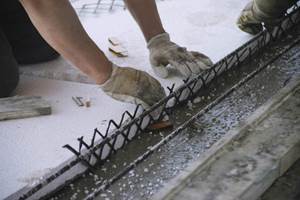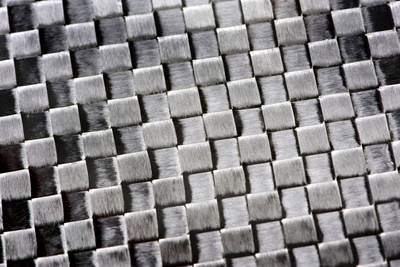IMAGINE Act encourages composite materials use for infrastructure applications
Introduced bipartisan legislation to spur R&D and deployment of advanced materials for nationwide transportation and water infrastructure projects.

Photo Credit: Getty Images
As the Senate begins to turn its attention toward a national infrastructure investment plan, U.S. Senators Sheldon Whitehouse and Susan Collins announced on March 24 the reintroduced of the Innovative Materials for America’s Growth and Infrastructure Newly Expanded (IMAGINE) Act, to encourage research and deployment of innovative, advanced construction materials — including composites — in transportation and water infrastructure projects nationwide. Investing in new techniques and materials could help extend the life of critical public works that draw increasingly poor ratings for condition and performance.
The bill would reportedly fund research into new materials and building techniques, and spur federal investment in bridge and water infrastructure projects that use innovative materials, prioritizing coastal and rural projects. Should the bill pass, legislation would also create a task force to examine standards and methods used to assess the federal government’s approval of materials for infrastructure projects.
“American infrastructure is ready for a once-in-a-generation modernization. To get it right, we need to use the most durable, cost-effective composite materials available to rebuild roads, bridges, water systems and other key infrastructure,” says Senator Whitehouse, who has for years championed Rhode Island’s composites manufacturing industry. “Our bipartisan bill will literally help build back better.”
“Engineers in Maine and across the country are developing exciting new ways to improve our infrastructure by using innovative, resilient and cost-effective materials and techniques, including those found in the forest products industry,” adds Senator Collins. “The University of Maine’s [UMaine] Advanced Structures and Composites Center is at the forefront of efforts to use 3D printing, cellulose and other cutting-edge materials and techniques to transform every sector of our economy, from manufacturing to our transportation network. The invaluable work being done by the recently-established Transportation Infrastructure Durability Center, a consortium of universities led by UMaine, would also benefit from the investments included in the bill. The IMAGINE Act will help foster this important research and translate it into practice.”
The IMAGINE Act would encourage the development of materials such as high-performance asphalt mixtures and concrete formulations, geo-synthetic materials, advanced alloys and metals, reinforced polymer composites, aggregate materials and advanced polymers.
“The American Composites Manufacturers Association applauds the leadership of Senator Whitehouse and Senator Collins,” states American Composites Manufacturers Association (ACMA, Arlington, Va., U.S.) Vice President John Busel. “The IMAGINE Act will advance and integrate innovative technologies and materials such as fiber-reinforced polymer composites to sustainably rebuild our infrastructure and revitalize the U.S. economy.”
Christian Cowan, executive director of 401 Tech Bridge (Portsmouth, R.I., U.S.), an advanced materials and technology commercialization center in Rhode Island says that “materials innovation is critical to realizing important advancements in the infrastructure that enables growth and opportunity across our nation. The IMAGINE Act will encourage and support research, design and construction to strengthen the country’s infrastructure. I applaud this proposal and the important role of the National Institute of Standards and Technologies to bring together academia, government and private industry to accelerate the adoption of new technologies and create new jobs through material commercialization.”
According to Dr. Habib J. Dagher, executive director of the Advanced Structures and Composites Center (ASCC) at the University of Maine, says that the IMAGINE Act will be critical to maintaining U.S. technological leadership in the advanced materials space. New construction is reportedly expected to be worth $1.5 trillion in the U.S. in 2022, and the construction industry is worth more than 10% of the world GDP. Further, he says, developing construction materials that are environmentally friendly, lighter, faster to install and that will last longer will create jobs, save taxpayer dollars and improve the safety of the traveling public.
One provision of the bill would call on the Transportation Secretary to form innovative material hubs throughout the country to continue to drive research into uses of innovative materials in infrastructure projects. The provision was inspired by the success of regional manufacturing clusters — like advanced composites makers in Rhode Island — that have leveraged their innovations and expertise to grow their industry.
A summary of the bill is available here.
Related Content
Composites reinvent infrastructure
Celebrating National Composites Week, CW shares ways in which composites continue to evolve the way we approach infrastructure projects.
Read MoreRecycling end-of-life composite parts: New methods, markets
From infrastructure solutions to consumer products, Polish recycler Anmet and Netherlands-based researchers are developing new methods for repurposing wind turbine blades and other composite parts.
Read MoreComposites-reinforced concrete for sustainable data center construction
Metromont’s C-GRID-reinforced insulated precast concrete’s high strength, durability, light weight and ease of installation improve data center performance, construction time and sustainability.
Read MoreCSub delivers one-piece composite truss bridge in Norway
EPC supplier has fabricated, transported and delivered a 42-meter composite bridge intended for pedestrians and bicyclists.
Read MoreRead Next
White House Executive Order to build supply chain resilience for carbon fiber
Commitment to comprehensively address U.S. supply chain risks highlights carbon fiber as one of four key products that will be reviewed.
Read MoreVIDEO: High-volume processing for fiberglass components
Cannon Ergos, a company specializing in high-ton presses and equipment for composites fabrication and plastics processing, displayed automotive and industrial components at CAMX 2024.
Read More“Structured air” TPS safeguards composite structures
Powered by an 85% air/15% pure polyimide aerogel, Blueshift’s novel material system protects structures during transient thermal events from -200°C to beyond 2400°C for rockets, battery boxes and more.
Read More
























